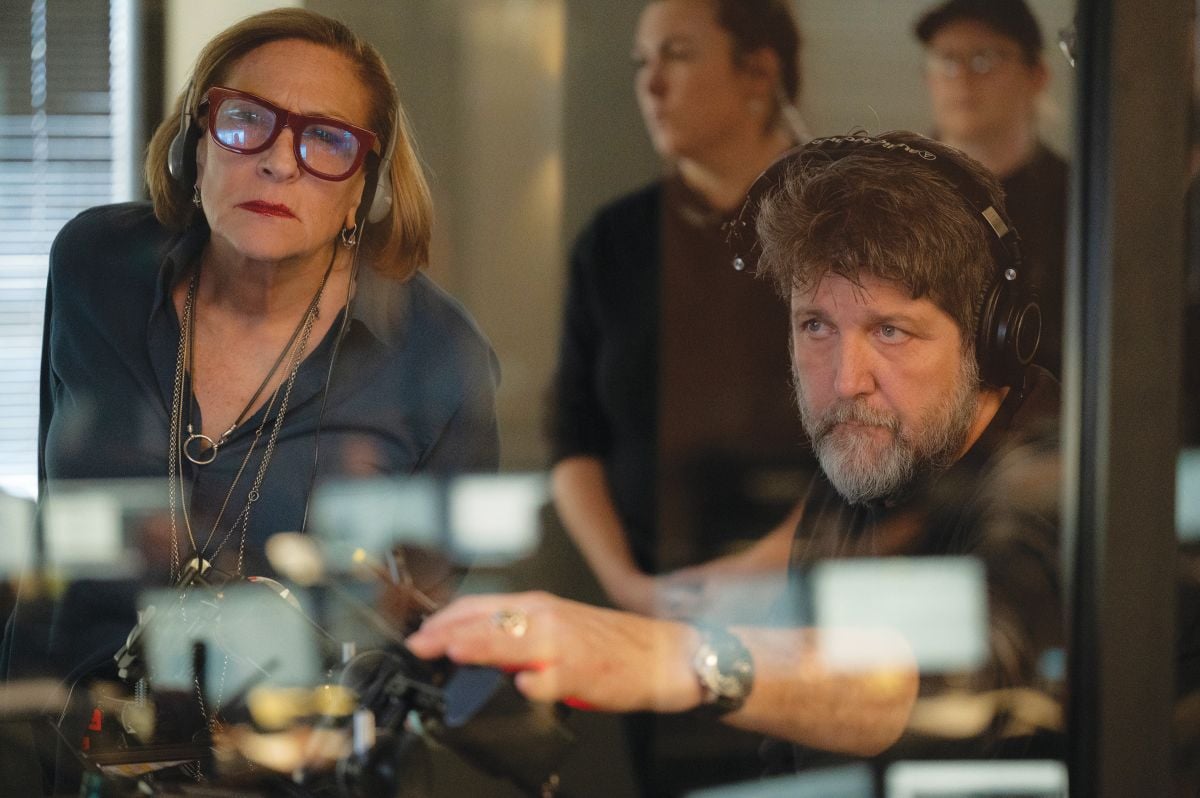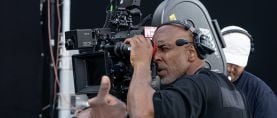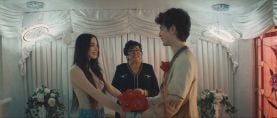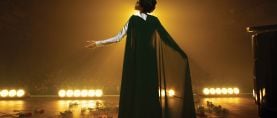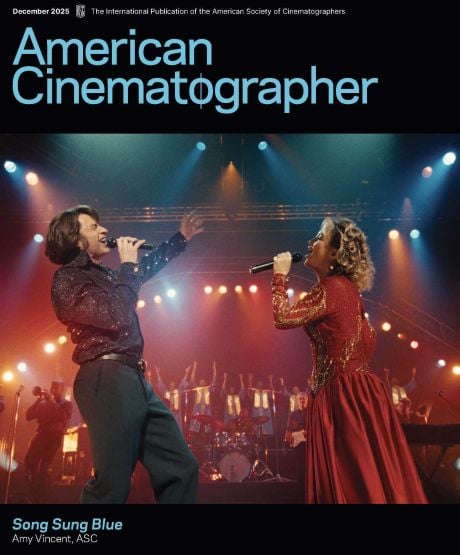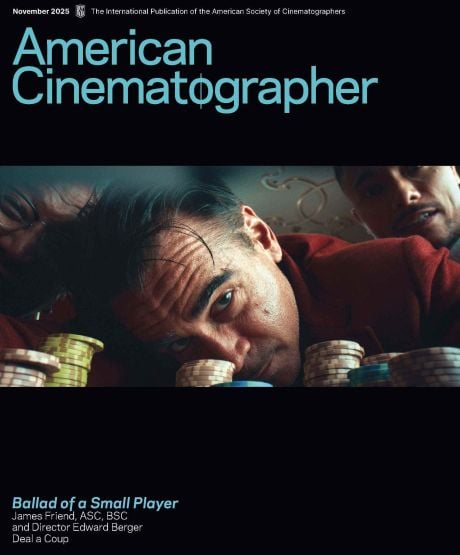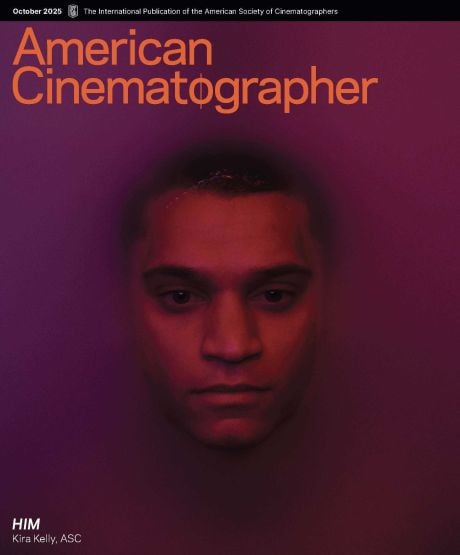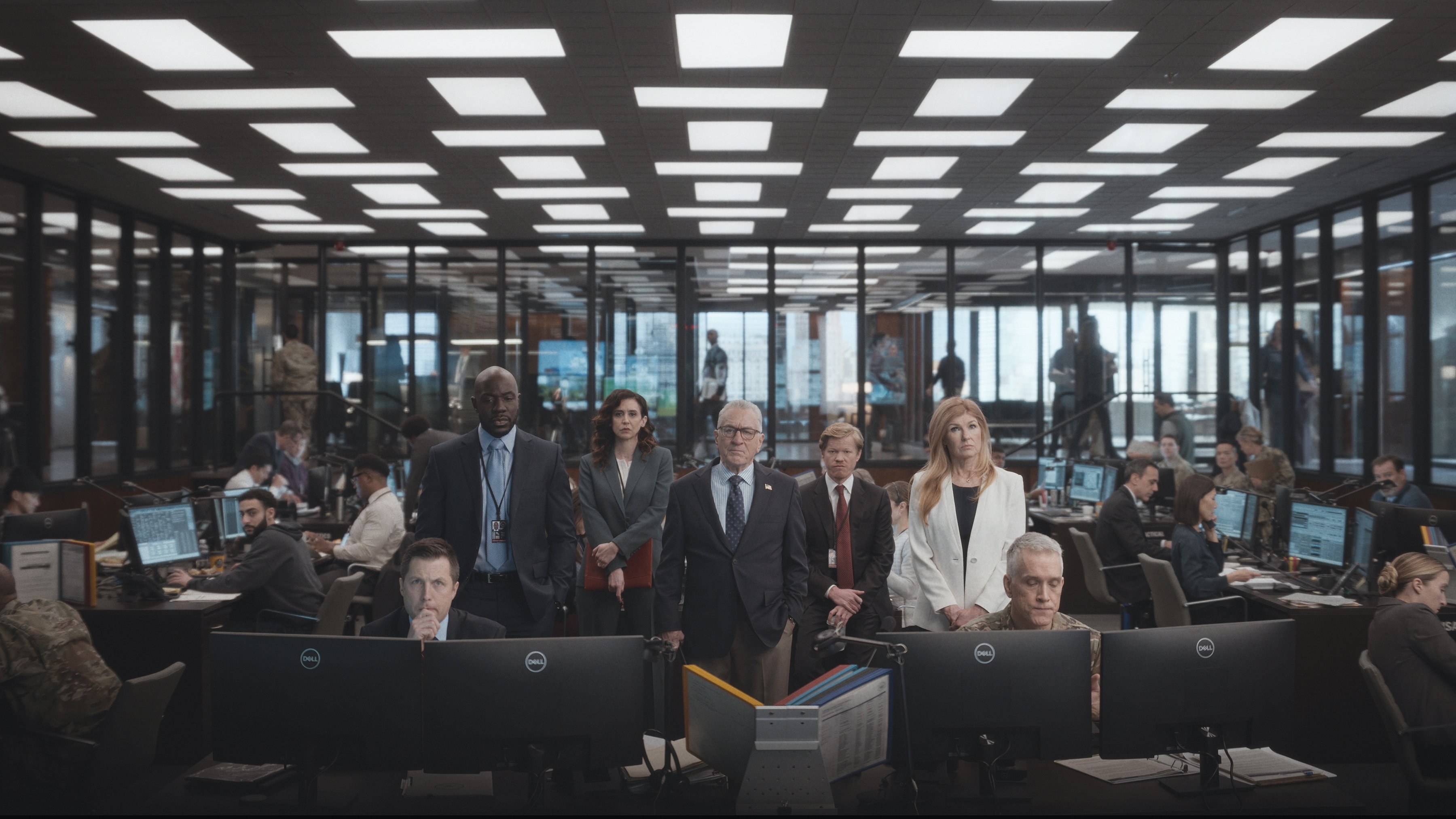
Zero Day: Exploring an Aftermath
John Conroy, ASC, ISC helps to provide a mood for murky motives in this political-thriller series.
Unit photography by Jojo Whilden, SMPSP, courtesy of Netflix
In an era fraught with anxieties and global unrest, the potential for calamity is ever-present. The limited series Zero Day escorts us into the aftermath of a harrowing cyberattack on U.S. soil, a crisis that leads U.S. President Evelyn Mitchell (Angela Bassett) to call on her Oval Office predecessor, George Mullen (Robert De Niro), to help shape the nation’s response.
Created by Eric Newman, Noah Oppenheim and Michael Schmidt, the six-episode Netflix production was directed by Lesli Linka Glatter and shot by John Conroy, ASC, ISC, who recently connected with AC to discuss the project.
American Cinematographer: It seems you gravitate toward projects with complex characters in morally ambiguous worlds. Is that a conscious choice?
John Conroy, ASC, ISC: I definitely choose the darker side of life in my work. I suppose I’m drawn to it. [Shooting] Luther was a big influence on me and on my career, and on Penny Dreadful [AC July ’15] in particular. It really suits my aesthetic; I like complex stories and complex characters. I think that tone allows you to kind of develop your shooting style a little bit, too, as you go along. With darker, morally ambiguous stuff, you want to be taken on a journey with somebody. In terms of Zero Day, it’s interesting, because there are so many layers and characters. It’s such an ensemble piece. But we always wanted Bob [De Niro] as our conduit getting us in and out of scenes, and to always be with him.
What was your approach to composition on this project?
One of the great references Lesli and I talked about was The Parallax View [shot by Gordon Willis, ASC]. It’s something I love: frames within a frame where we trap the characters. It’s quite heavy and oppressive, like a piece of foreground that takes up at least half the frame, or top shots where we wanted to feel a heaviness bearing down on the lead character. We were always trying to come up with an interesting way to cover scenes with beautiful shots.
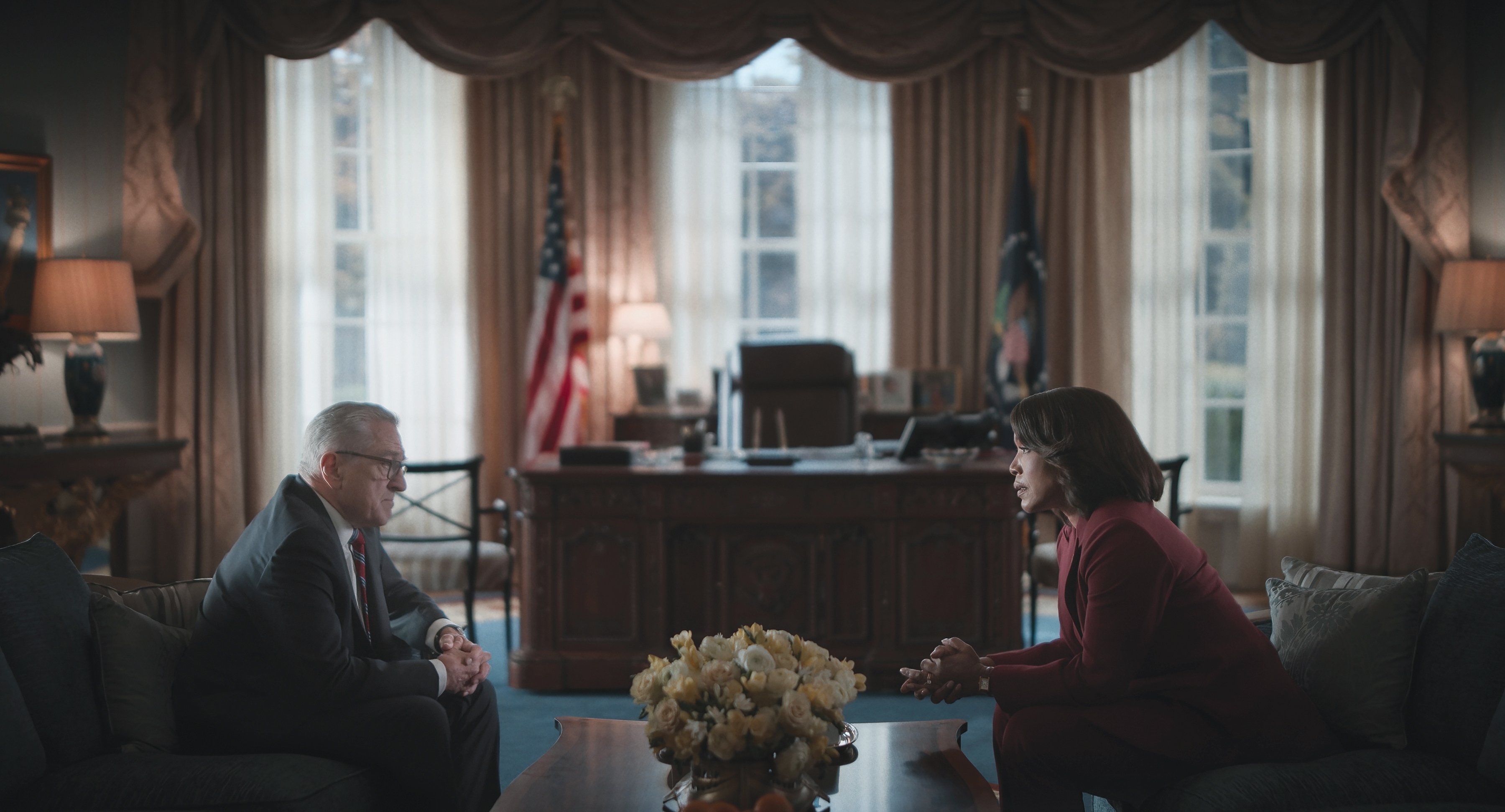
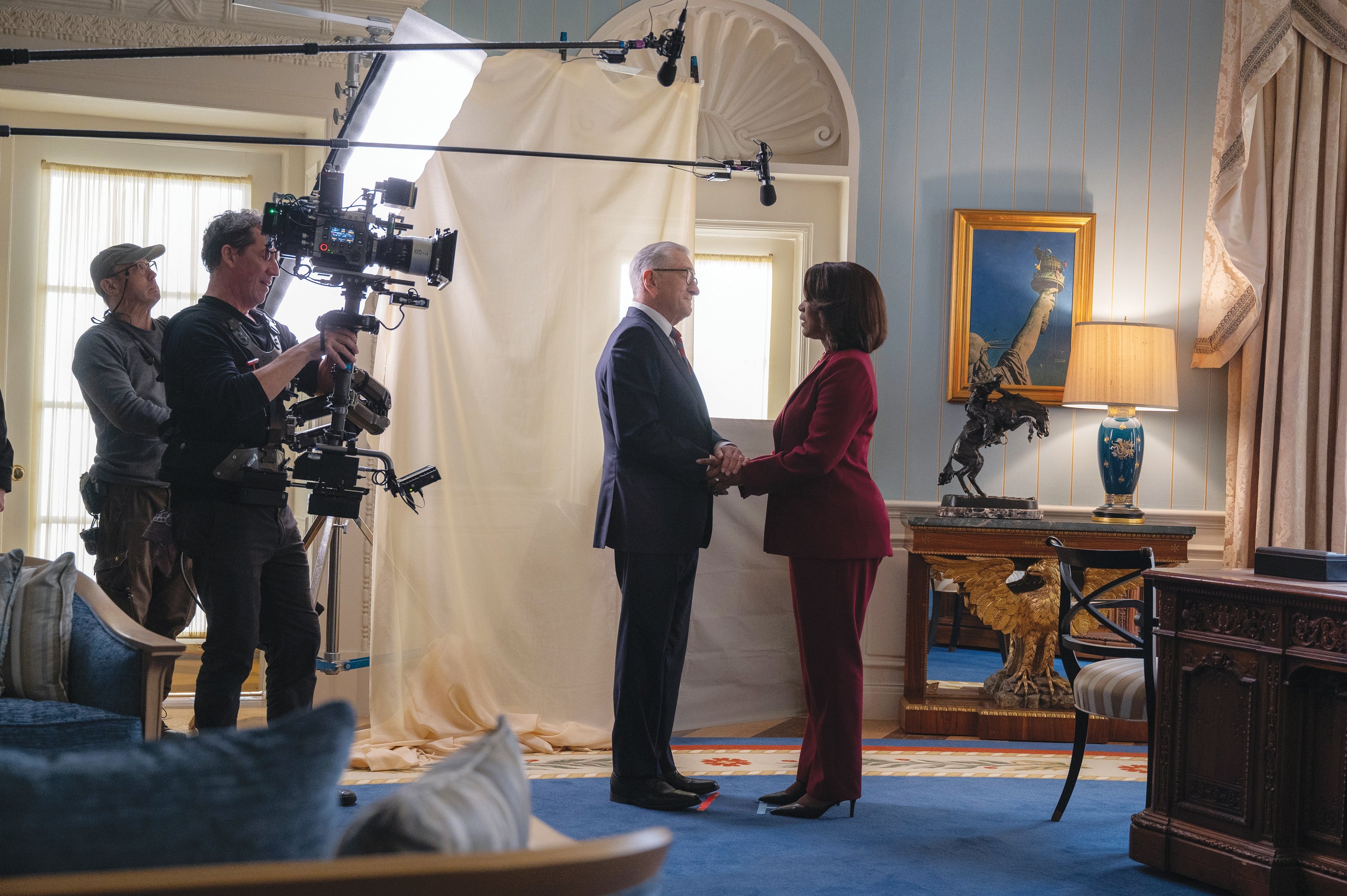
How did you and your collaborators deal with the sensitivities around the subject matter?
When you’re filming with Lesli, it’s all about keeping it very real, so there’s no heightened drama just for the sake of it. There’s no “sexy violence” in the show; it’s either visceral or hidden. A lot of it is suggested. You’re dealing with the aftermath more than the actual event. I think that’s what we found more interesting — to avoid going down the wrong path by sensationalizing stuff. Things happen in little vignettes, then it’s really about playing the aftermath in the emotions on the actors’ faces.
There are moments when the night itself becomes an antagonistic factor. How did you tackle those scenes?
At that stage in the story, things are really heightened, and the dark is dangerous. A room with no lights on is the scariest place. For that objective, the Sony FX6 and FX3 were fantastic. We had to shoot down at the Downtown Manhattan Heliport at night, and we couldn’t put lights there. I also went down to the New York Financial District and tested the FX6 and FX3 at 12,000 ASA. The ambience from those buildings alone was more than enough to light everything we needed to do. In fact, I had to put an ND in! Also, I wanted to give Lesli freedom. We had restricted time — it was summer, and the nights were short. We graded [the look] down so it was much darker. That’s one of the great advantages of shooting digital. I did the test with our gaffer, Eric Boncher, and grip, Kevin Lowry. I filmed them walking around the route, and I was astonished that I needed an ND because there was too much light coming off of the buildings. I have no problem with things going semi-silhouette if they’re against a really beautiful background.
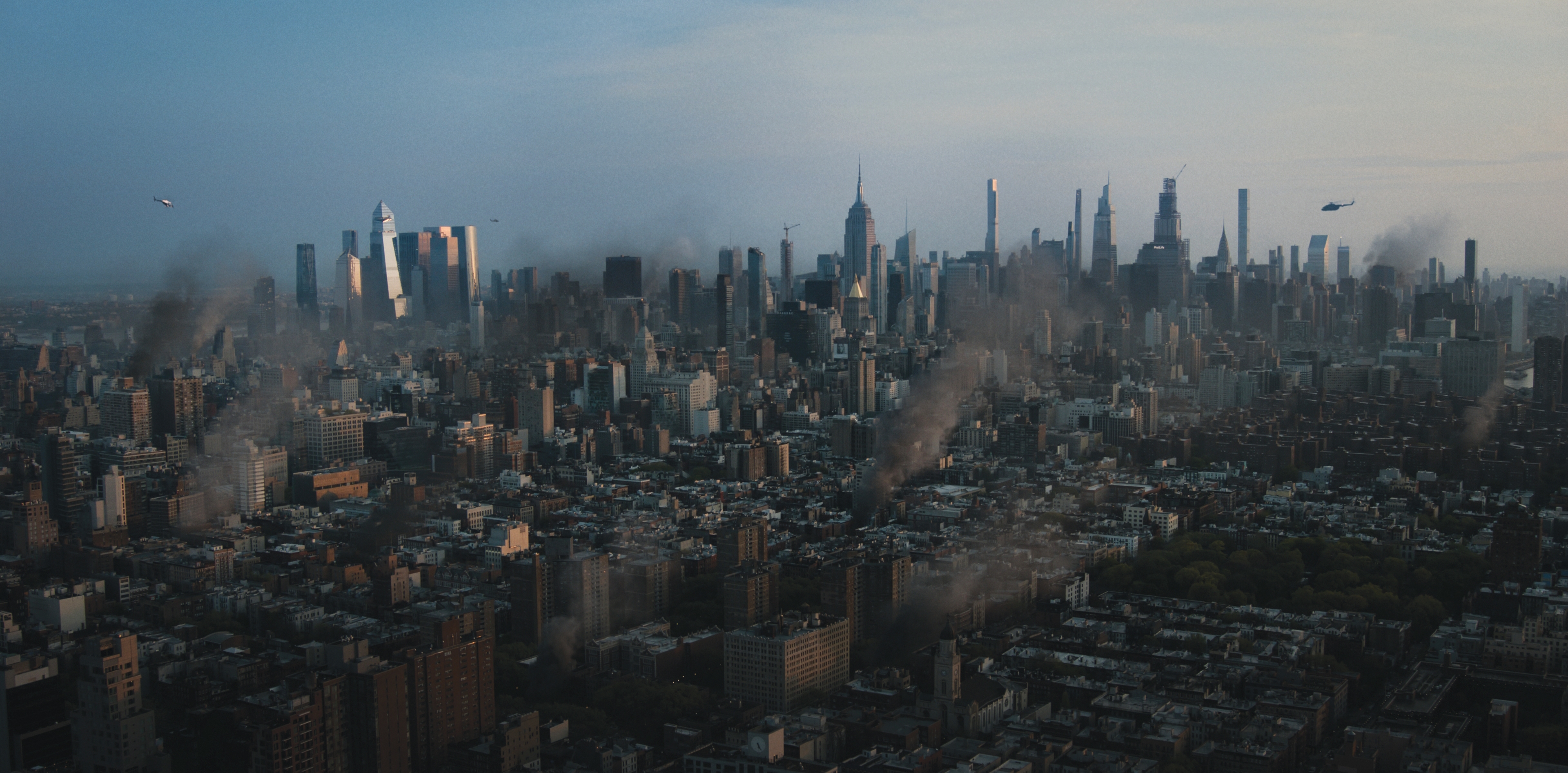
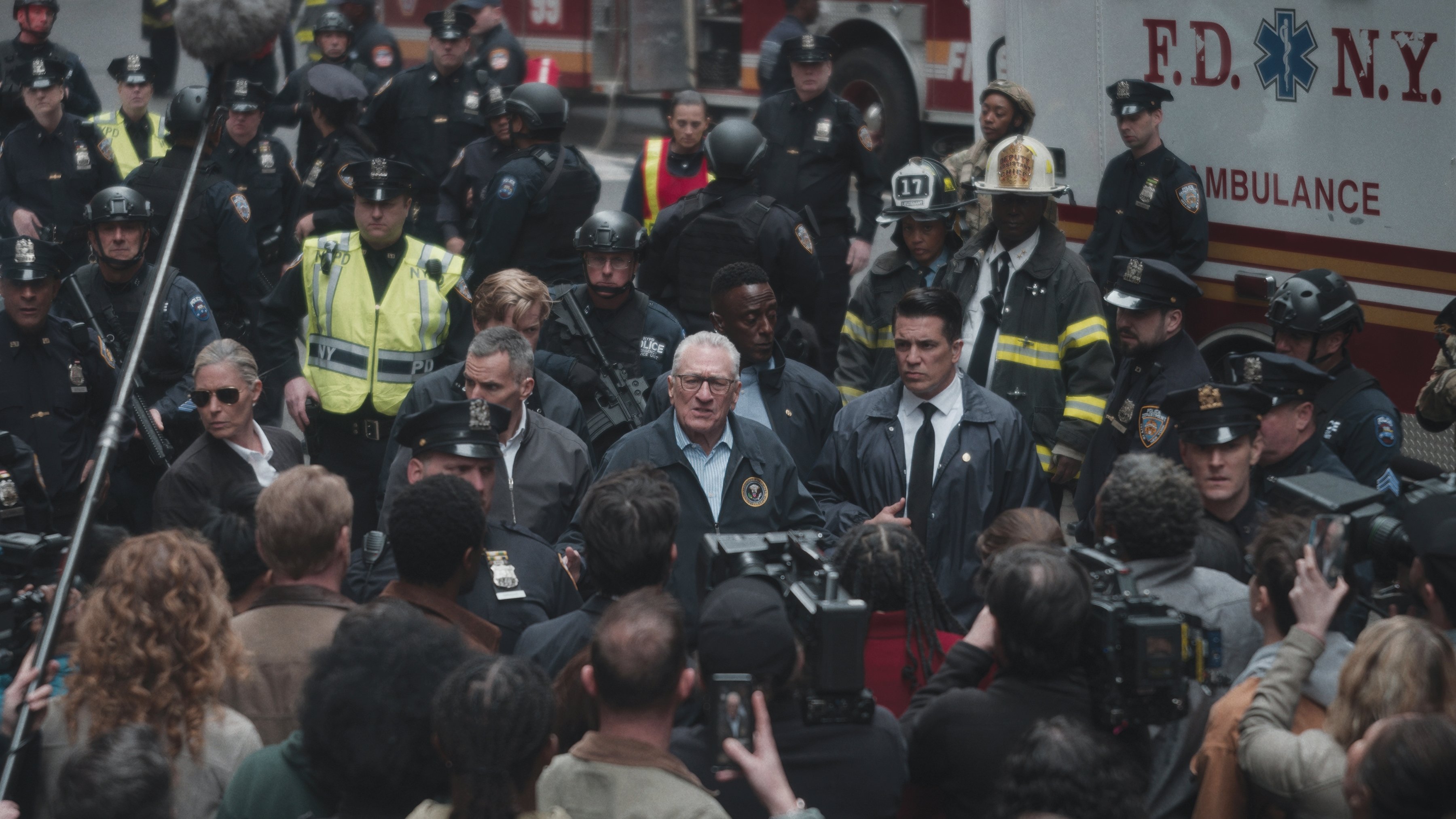
How did you manage a holistic collaboration among departments to achieve the project’s look?
To me, the classic feature-film look for period material is to desaturate and introduce really deep, pleasing blacks — something I’ve done on a lot of my own period-oriented projects. When you go as far as we did on Penny Dreadful, sometimes the actors’ lips would lose too much color and lean into brown, not red, and it was the same with costumes, so you have to be conscious of it and boost the colors that get affected the most.
What I normally do now, as many as six weeks before production, is to try to get color swatches from costume and production design and put flesh tones against them. We shoot our first round of camera tests to try and get the skin tones we like, then we basically see where that leaves the rest of the colors. My process is very inclusive — we have conversations weeks and weeks before we even get to the hair-and-makeup tests. There’s nothing worse than doing your hair-and-makeup test, usually the week before shooting, and seeing unnatural skin tones because you haven’t talked to your colleagues enough. All of a sudden they’re going. “Oh, my God! I didn’t realize,” and they’ve got to change loads of costumes and it costs money.
On Zero Day, we took those types of concerns to the next level, especially in terms of costuming and one key prop. Bob’s character wears glasses, and we must have tried about 30 pairs to get the right ones for him, just because it was so important. Our prop master, Joel Weaver, was great at getting the best anti-reflective lenses with no weird color hues. When you’re filming with glasses, reflections are a nightmare. As cinematographers, we try to light to the look, and if the main character is wearing glasses, you need to find the perfect kick angle so you can actually see the glasses without the source being too obviously reflected.
For this show, that meant getting doubles of lampshades and light fixtures that we were using as sources, so if they were reflected they wouldn’t seem out of place.
During the camera tests we got most of the props and some of the chairs, as well as samples of the curtains, wallpaper and rugs that we put up on flats we’d chosen for each character. We could then see, for each character, how their costumes, makeup and hair interacted with the color practicals and light sources — both day and night — that would be on set.
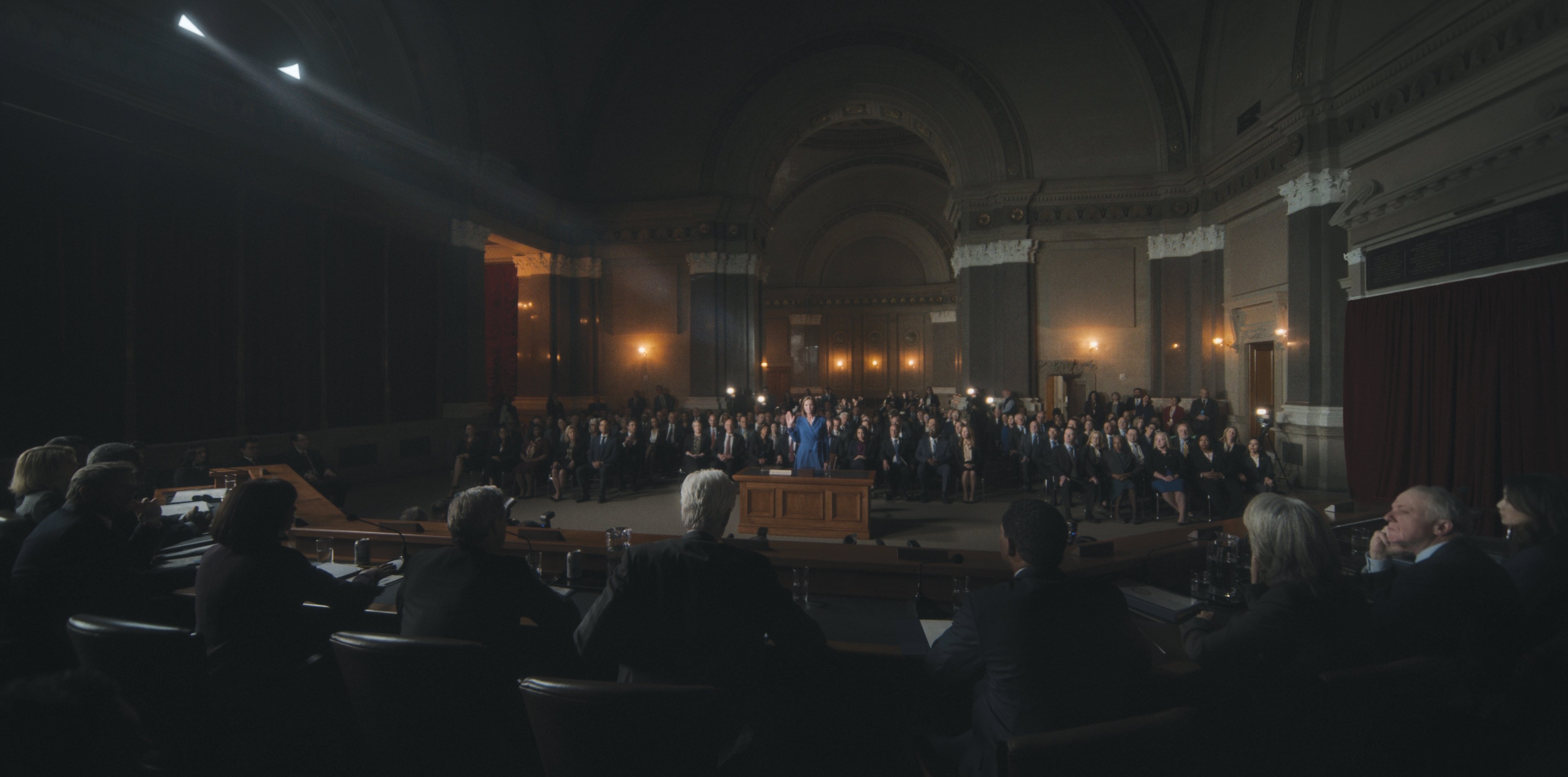
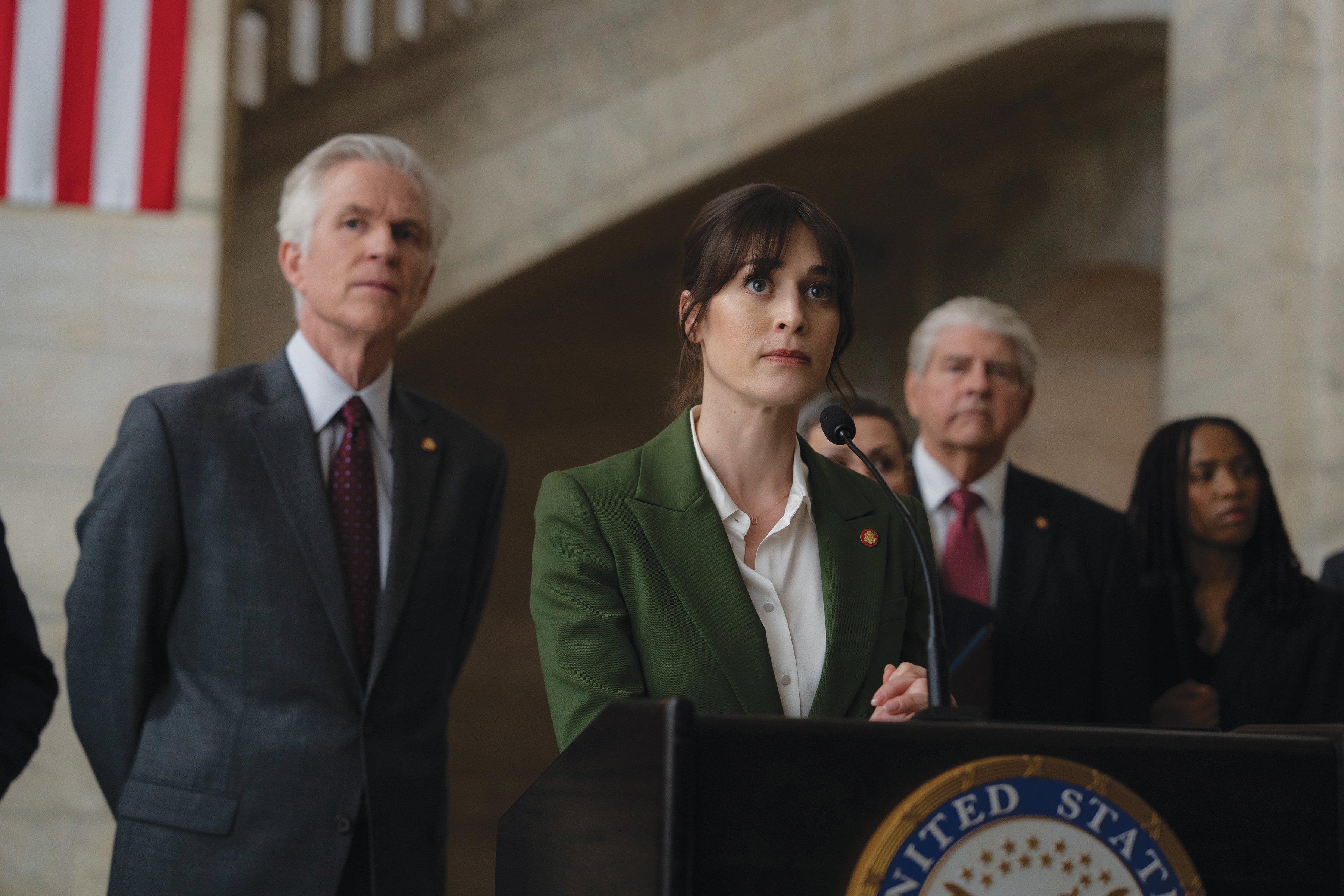
What kinds of choices did you make with lenses?
Because most of our actors were mature in terms of their ages, and because I knew Lesli wanted to do a lot of close-ups to capture the drama of the situations, I went to Panavision New York to consult with Jeff Marzigliano and Luca Spensieri. We [customized] Primo Artiste lenses with two different types of looks mixed together: [Panavision’s custom re-ceipes] “FTR” and “Noir No. 1.” I tested all of them with stand-ins, just to see how skin tones and pores reacted.
After completing those tests, I realized that the practicals might bloom a little, so I also carried a set of clean VA series lenses. For night exteriors, wide shots or any shots where we might have a lot of practicals, I didn’t want that gloomy halo effect. But once we got into the wider lenses, even on the customized set, it was less than what you got with a 40mm and above.
By observing the practicals in these tests, we were able to get a complete picture of what our interiors would look like, and I [changed the key light position] on everybody from left to right, right to left, with strong backlight and more subtle backlight. We then [tested an interior daylight look], turning on a big daylight source to see how the colors reacted in day and night. It was quite involved, but once everything was set up, it was just a matter of bringing in an actor, putting their flats behind them, getting them to walk back and forth and turn around, and seeing how the light affected the different sides of their face. It’s amazing how nuanced light changes affect the face. I learned a lot from this process in terms of picking key sidelight for certain scenes.
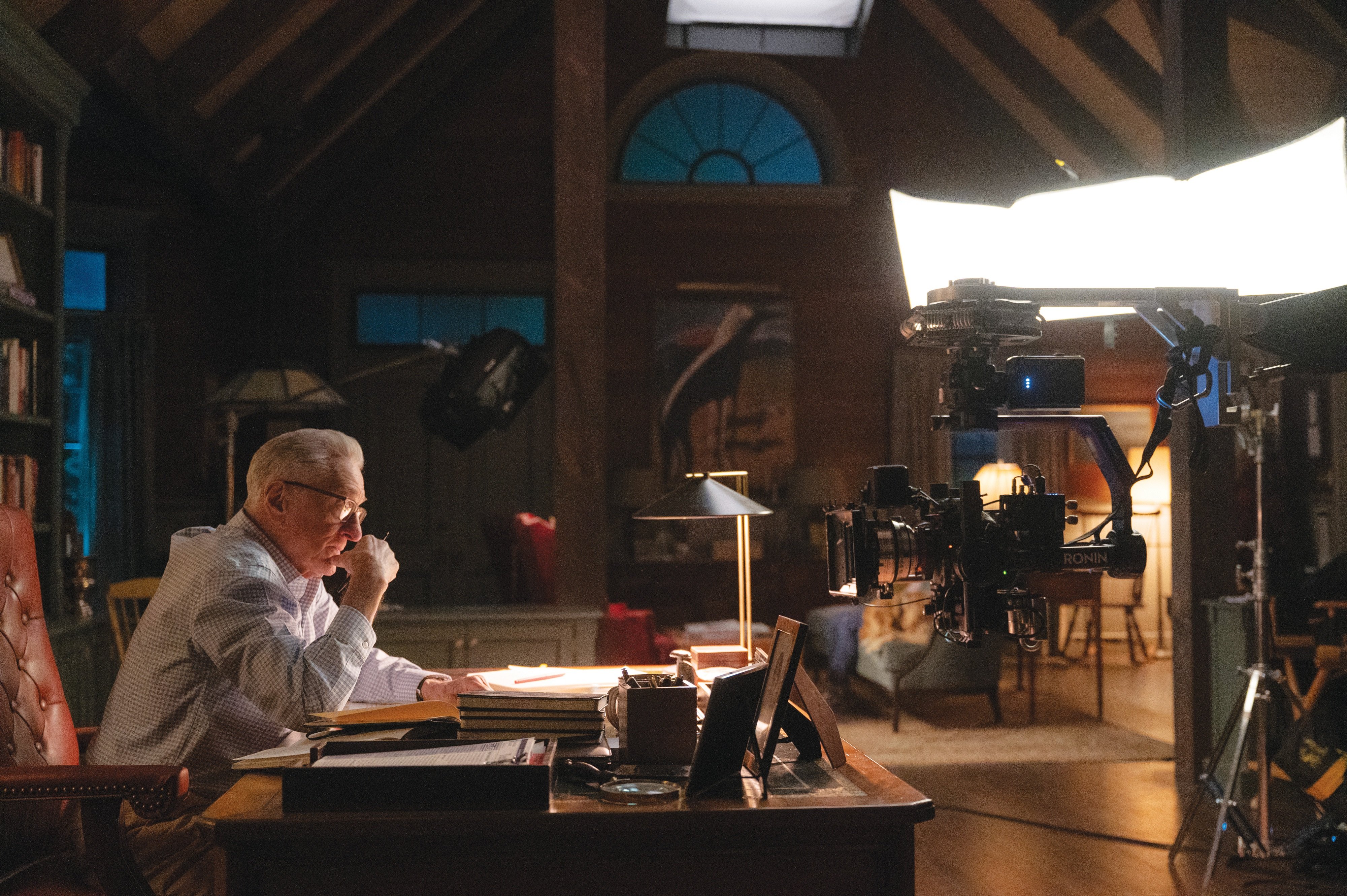
How did De Niro’s methods and contributions enrich your collaborative process?
It was one of the privileges of my career. Bob and the rest of the cast were amazing, all of them, but, you know, Bob is Bob, and there is only one De Niro! He was very respectful, very sweet, very quiet, very collaborative and very happy to be involved. There were things I had to ask him to do for flashback sequences that show him trying to remember things. He was really open to those ideas and interested in them as well. I shot some hand-cranked film for some of those sequences, which I enjoyed. I always love a bit of hand crank, and I love shooting on film. We were cranking with an Arri 35mm IIC, using Kodak Vision 3 500T [5219] stock.
How did you choose your camera kit?
The main camera was the Sony Venice, and my main lenses were the customized Panavision Primo Artistes. My brilliant A-camera 1st AC, Courtney Bridgers, said we used more than 100 camera bodies over the length of this job, for the main unit and 2nd units. We used the Sony FX6 and the FX3 for a wide range of situations. We also did a lot of work on the [DJI] Ronin remote head, keeping an FX6 on it at all times. We also used an FX3 on a Ronin RS 3 Pro.
I used [Tiffen] ¼ Black Diffusion Effects filter all the time for close-ups, just to take the edge off.
We had so many big sequences that a lot of those were shot with five Venice cameras, and we ran at least three cameras the whole time. We needed to get as much coverage as we could on a tight schedule, but we only picked interesting angles that were good; we never sacrificed quality. For our exteriors, like the scene where De Niro’s character walks up Wall Street, we had seven or eight cameras rolling, because we had a thousand extras with limited time to shoot. We had to leapfrog setups so we could be as efficient as possible.
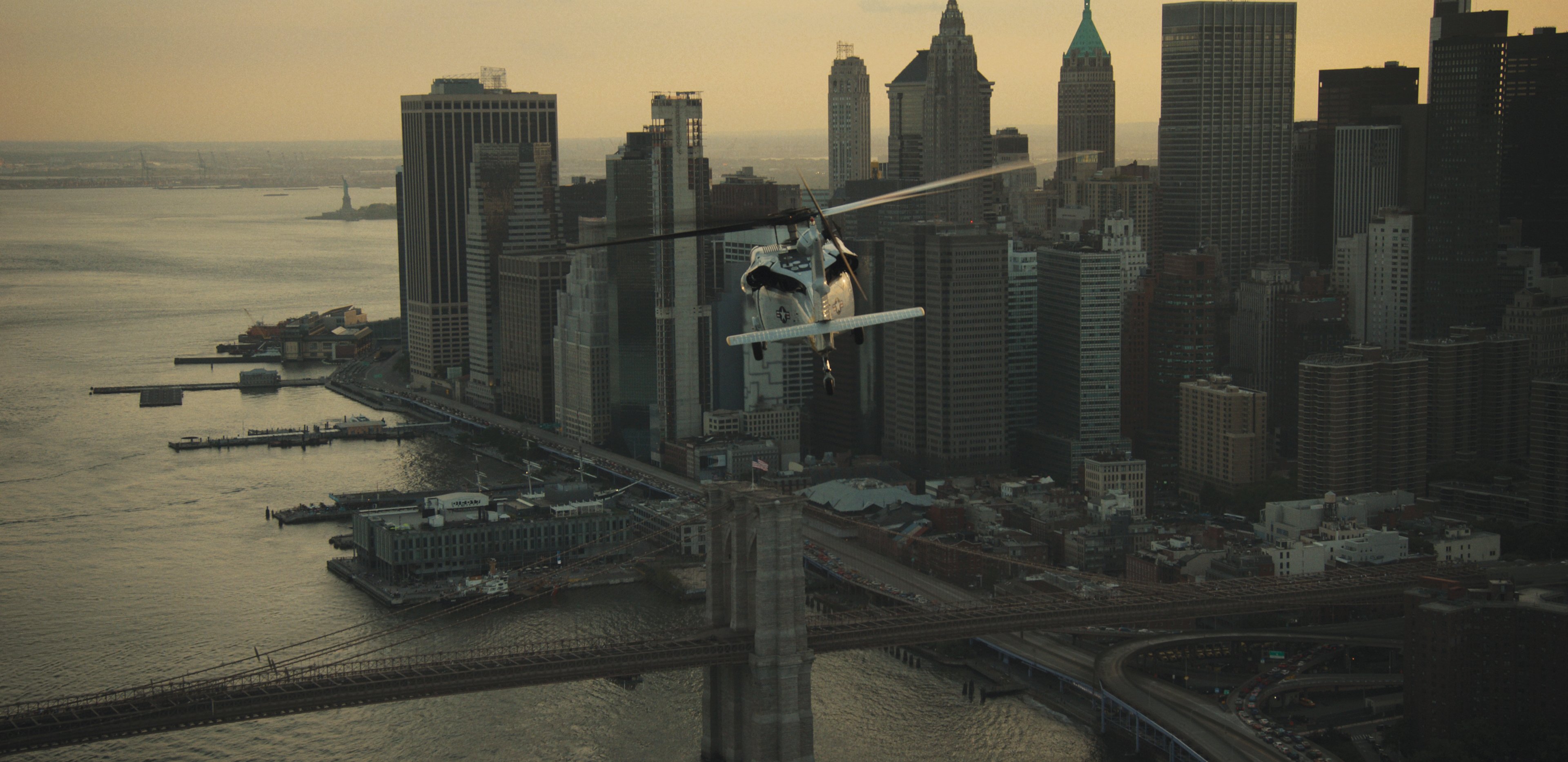
That must have made monitoring a challenge.
Well, I use my meter all the time, so that was my main process; I don’t feel I have to monitor everything on multi-camera days, because it can be prohibitive and take too much time. Because the cameras were so far away from each other, we didn’t always see every shot, and it was such a long run. We used a Mini Libra, with some Steadicam and the Ronin 2 as well, for tracking along the street amongst the crowds. Two grips carried it, and we operated it remotely. That was quite challenging, too, because as usual we ended up chasing the sun all day. First AD Michael Lerman was great — always very accommodating and very aware of the light.
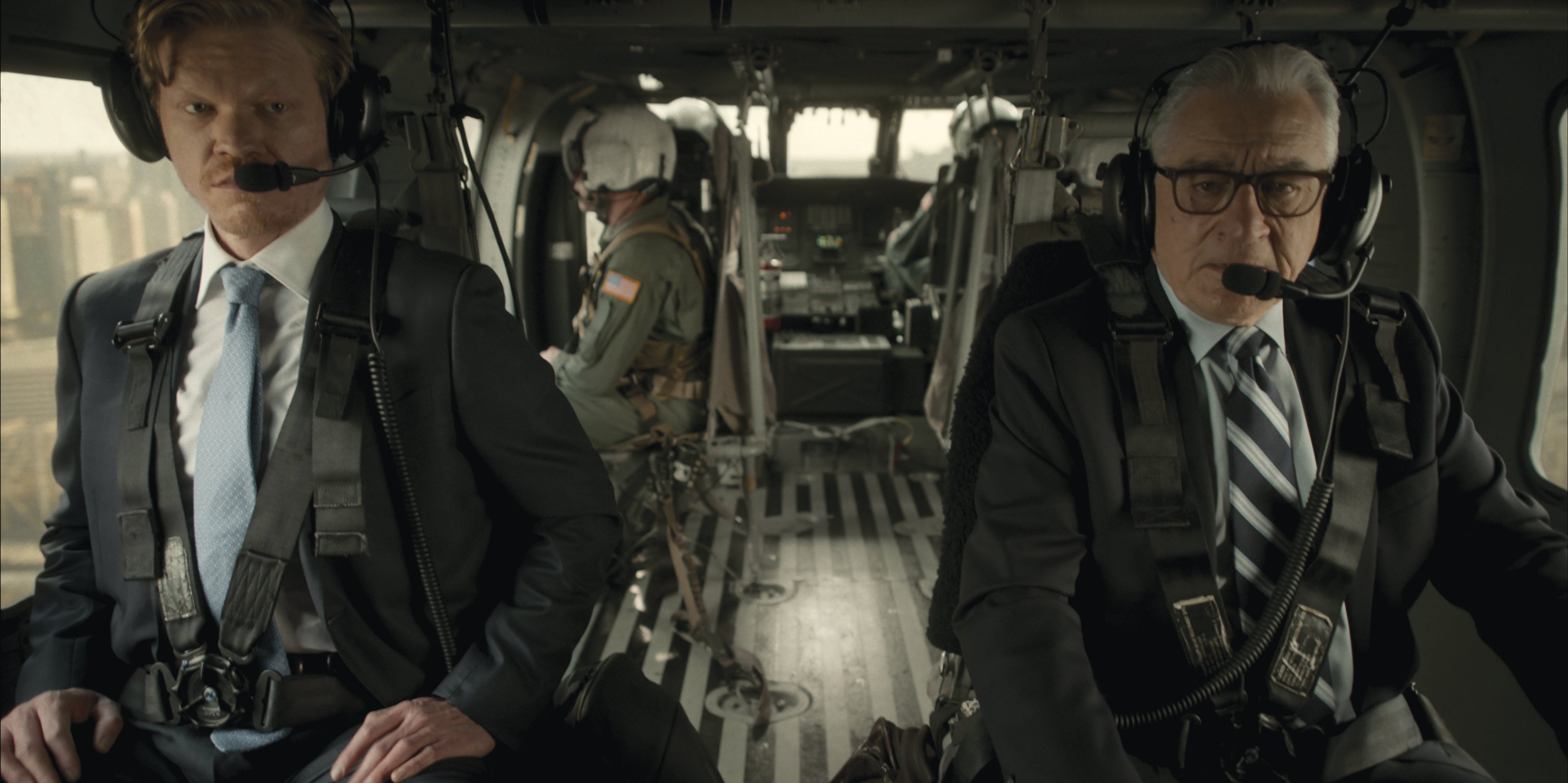
What was your general strategy for shooting in the Zero Day Commission set?
One of the biggest complications I had on the entire production was shooting in there. They built a four-walled glass set, and it wasn’t just one layer of glass, but three or four layers in some places [looking from one glass office into another and another]. The set was huge — a whole floor of a skyscraper, with many layers of glass, so it would have been cost-prohibitive to gimbal the walls. Also, the ceiling lights were so prominent that we wanted to keep the reflections pure, with no funny angles involving gimbaled glass. I had to come up with different ways of shooting, because with Lesli, the camera is always moving. We basically came up with ways of hiding the camera with lighting cues and practical tricks. So, if you’re looking at a set of windows, we’re putting black on the inside of the windows behind you — they were put up and removed in camera — so there’s no double reflection that can highlight the camera. Everyone on the crew had to wear black when we shot in there, and the grips had to move around using 6-by-3-foot panels with little eyeholes so they could walk behind the camera. To avoid seeing all of my lights reflected, we made lights in the shape of all the practicals on the set. When you’re looking at people in the Commission, there are loads of ceiling lights reflected. When I was doing the actors’ close-ups, I would have those ceiling lights on stands, or similar-shaped lights, so that they looked like other lights that were just reflected in the ceiling. I kind of had to think outside the box, because our lights had to hide in plain sight.
On a show like this, you’ve got to be open to ideas. The more you hide and close yourself off, the less likely you are to find that idea you need. Even bad ideas might make you think of a better one.
Tech Specs:
2:1
Cameras | Sony Venice, FX6, FX3
Lenses | Panavision Primo Artistes (customized), VA
